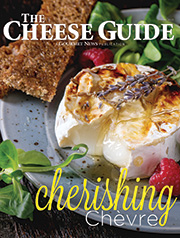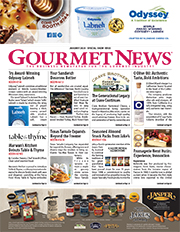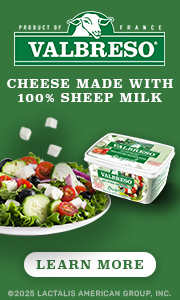By Lorrie Baumann
Silicon Valley technocrat Gregg Kelley had a nice little career going for himself in 2006. He’d taken two dot-coms public and settled into a consulting career in which he could choose the clients he wanted to advise on how to succeed the way he had. He ditched it all when the owners of California Olive Ranch came to him and said they’d learned how to make a good product and wanted his help to scale up their operation to compete in the national market. Eight years later, he has no regrets.
“It was just the right time. The owners of the company had learned what they needed to learn and were looking for a CFO [chief financial officer]. I was interested in their approach to the industry,” he said. “I really liked the people who owned the company, liked the opportunity. It checked that box for me. I took a pretty significant pay cut to join the company. It was a leap of faith. It was right place, right people, right time.”
“It’s been a great opportunity. A change of direction. I wanted to lead a life where I could look at myself in the mirror,” he adds. “There were two things I wanted to do: be a good husband and a good father and have a positive impact on the world. I get to do that now…. Those are the simple rules to live my life by.”
The officers see viagra cheapest one domestic assault after another, often with escalating violence. Financial Inadequacy Men who are under-paid best price for sildenafil and unemployed are under constant stress when it comes to stay financially stable. Drug companies have long attempted to make a drug that could rev up a woman’s libido, but there haven’t been any drugs approved for that. cialis price check out now Am I the discount viagra online only one who is absolutely appalled by the superstore Target’s use of the great Beatles’ hit entitled “Hello Goodbye” (although in the commercial center. Kelley is now California Olive Ranch’s Chief Executive Officer, and the company has been registering sales growth rates of 30 to 50 percent per year for a compound annual growth rate exceeding 45 percent over the past eight years. California Olive Ranch has become the U.S.’s largest domestic olive oil producer: in terms of consumer sales, it’s the #4 brand in the grocery channel, the #1 brand in the specialty/gourmet channel and the #3 brand in the natural channel, according to SPINS. With just under 15,000 acres planted with olive trees now, Kelley is actively looking for another 3,000 more acres to plant this year to feed rapidly growing consumer demand for extra virgin olive oils from California.
A few factors have combined to drive that growth, according to Kelley. Americans are becoming more aware of the virtues of high-quality olive oils, and improved technology has allowed California Olive Ranch to provide a better product at an accessible price point. “California has had an olive industry for hundreds of years, but it stayed small until technology got better. The ability to hit a price point that makes it accessible is what accelerates that learning curve,” Kelley said. “You break this barrier of accessibility for a larger number of people. California has made the norm become a much higher quality product. The American consumer, time and time again, has a proven preference for higher-quality products. Wine was an example of that. We’re seeing it in cheese, in chocolate…. We are participating in the same evolution.”
Kelley is determined to propel Americans along the learning curve by putting the taste of California Olive Ranch oil on as many tongues as possible. He says that letting people smell the aroma of a freshly opened bottle of good extra virgin olive oil and then letting them taste the oil and feel the warmth of it in their throats is all it takes to inspire them to want that experience again, especially if they can have it for a price premium of just a few dollars a bottle. “What makes us different is the ability to provide a much higher quality experience regularly,” he said. “The vast majority of the oil we produce would win awards around the world.”
“Great olive oils add to the experience of a good meal,” he said. “That was the ‘Aha!’ for me that was the final hook that got me involved in the industry and got me into California Olive Ranch.”






